It's nothing much to look at. Gray. Drab. A little fuzzy.
Anybody can tie it, which means it turns up in various stages of gray, and in various stages of quality. There's solace for even the ham-handed tier, however. Even in its finest condition, the Adams is a bit underwhelming.
But not to trout. To trout, it's a magical meal that doesn't match exactly anything on the water, but it sure appears to be close enough to a lot of food sources that it gets plenty of looks. It's a classic attractor. A fly for all seasons.
Oddly enough, it was tied to match a hatch, but, according to fly fishing historian Paul Schullery, it was never actually used on the water it was created to fish. The first Adams was tied by Michigan's Leonard Halladay, who created the fly based on a description by Charles Adams in the 1930s. Adams saw the "natural" on a pond in Halladay's yard. The natural? Nobody knows, but it was likely a mayfly — perhaps a March Brown or just a big gray drake.
After tying the fly for the angler who “discovered” it, Halladay handed it over to Adams, who took the fly to the nearby Boardman River (not the pond), where he determined the fly to be a "knockout." Halladay promptly named the fly the "Adams" in honor of the first man to put it through its paces. And, to this day, the Adams and the Boardman River are often mentioned in the same breath. Unfortunately, its creator, Leonard Halladay, is hardly ever mentioned at all.
The Adams occupies a prominent spot in my dry fly box. Unlike the Elk Hair Caddis or the Blue-winged Olive, the Adams is always in the box. It's not seasonal. It's not situational, if the Adams did have a season, it would, of course, be summer. It's a necessity. In smaller sizes, it'll pass as a midge or a baetis. Bigger, and it'll work during a caddis hatch. It's a great generic mayfly match, for, when it gets wet, the gray dubbing used to craft the pattern doesn’t really stay gray, but turns a dark, buggy shade of wrought iron.
To the fish, it’s likely the silhouette that matters, and I’ve used the Adams to reasonably imitate big Green Drakes on the Oldman River of Alberta and to ably match a March Brown hatch on Montana’s Rock Creek one spring as the rest of the dry-fly anglers that day eagerly awaited the seasonal arrival of the sqwala stonefly. On Idaho’s South Fork of the Snake, tied in size 20, the Adams fools trout keyed in on Blue-winged Olives — but I hate fishing an Adams so small.
On smaller water, where wild trout are more opportunistic than cautious, an oversized, bushy Adams — like a size 12 or even a size 10 — should be the first choice of any blue-lining angler. It's easy for both angler and fish to see in varied light and fast water. It floats well and has a buggy look to it, both from above, and, presumably, below. It might well be the perfect dry fly. I certainly think so.
I’ve often thought, in moments of whimsy that I think fly fishers are often prone to experiencing, that, on the arrival of the solstice, I’ll start a summer fishing the Adams, and, no matter what, I won’t change patterns until the season dies. I might change flies — backcountry trout can turn even the sturdiest Adams in a fuzzy mess after a time — but, I tell myself, I’ll always just fish the Adams. I even had a book idea on the topic — “Adams Summer,” I was going to call it. But, I’ve come to realize, those are the books written for the writer, not necessarily for the reader.
And then the whimsy goes away, only to come back on melancholy winter days when bare tree branches are visible through the office window and the landscape is generally white. Oh, to be fishing a big Adams, I think on days like that. For that would mean the trees would be green, the skies would be blue and the water around my ankles would be flowing free and not locked in the wintry grip that I’ve come to despise so much as I grow older.
And, of course, as I get older, I get more … crotchety. Like the old man who is constantly yelling at the neighborhood kids to “get the hell off my lawn!” That’s when my thinking gets more and more rigid — and why wouldn’t I, under that strident mindset, spend more time thinking about fishing nothing but an Adams over the course of summer?
And then I’ll sit down at the vise and tie up a dozen flies to satiate the “Dark Passenger” that just wants to fish one fly, dry and upstream, all the damn time.
Honestly, it could be done, and I bet the trout of the Rockies would be just as happy if I elected to solely fish one pattern over the course of a season. I’m guessing, too, that I’d catch plenty of fish, because in the creeks and streams where I spend the bulk of my time, the Adams seems to work, regardless of what’s hatching and what flavor of trout is swimming in the water at my feet.
Clearly with age comes a measure of stubbornness, and I’m channeling more of that trait these days. Not only am I needlessly bitter about the change of seasons and the passing of the “Adams Summer” in favor of the unsettled weather that’s finally taken over after a brilliant Indian summer, but I’m more inclined to wonder openly about the little things, like, “Why the hell did Halladay name the fly after Charles Adams?”
That would be like Kelly Galloup naming the Circus Peanut after the first dope who dredged one through the Madison below Quake Lake. What’s better? The Circus Peanut or the Jones streamer? So let’s do a solid to old Leonard, and maybe make a notable change in how we reference this storied fly. Let’s just call it the Halladay from here on out, if for no other reason than to mourn the passing of the season where the Adams — er, Halladay — is most prominently fished.
After all the fish the fly has managed to catch for us over the years, much like it did for Mr. Adams, that's the least we can do.




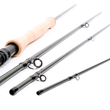
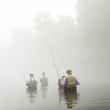


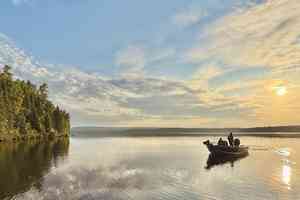


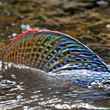

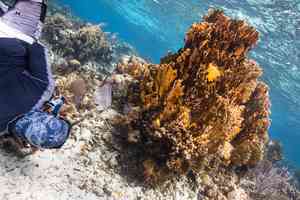







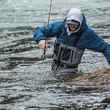
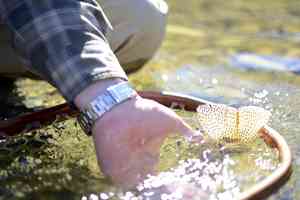
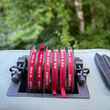

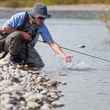

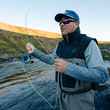

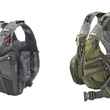
Comments
RRS replied on Permalink
Indeed, a wonderful creation, I usually carry about 60 in one box, just in case. I tie them from 6 to 22- text book to my own cripples and rogues and parachutes . Don't always work.. but what does. Thanks for the article
Gerry Quigley replied on Permalink
“Halladay“ It is !
Let it be known through out the land...
Thank you
Newton replied on Permalink
Why would you not include a single picture of the subject of the entire article?
Anonymous replied on Permalink
Good point to consider the noobs who might be lingering
Bob Miller replied on Permalink
If it ain't broke don't fix it may apply here. Maybe Mr. Adams is showing his appreciation for his name being used and watches over all who do. Leave well enough alone please.
Roger Stewart replied on Permalink
That was a great article for us novice fly fishers out there. A fly I will always cherish since I caught my first dry fly trout on an Adam’s on the South Fork.
Charley replied on Permalink
A very well written article! I can picture the melancholy backward glance as summer passes to fall then winter. You captured those moments
Schmiddy replied on Permalink
wooooooooow. You must be a guide. How long have you been flyfishing? Be honest is this your first year? Did covid inspire you to "get out doors"? That is some first grade stuff bud. Had no idea the Adams was a basic pattern that works in multiple applications. The elk hair, an BWO????!??! Noooooo waay.... Let me add my secret fly that works every time.. The pheasant tail, hares ear, copper John, and don't tell anyone, it's a trade secret. The prince... shhhhhhhh. Enjoy your first winter flyfishing coming up. Before you write it. Let me tell you. Midges are the ticket. I know, I should write articles. Have some original thoughts bud..
Robert Salter replied on Permalink
Dude what's your beef? You didn't even mention purple haze, madam X, or Joe's hopper.......
Schmiddy replied on Permalink
I bet you think Wolff is the most ironic name in flyfishing. Be more basic..
William D replied on Permalink
It's fairly rare that I start my day on the river with anything but a parachute Adams. Even if it's just fifty or sixty casts until I've analyzed the situation and made a more informed decision. It seems to work for me. At times it works well and a more informed choice isn't required, Thanks for the article !!
Anonymous replied on Permalink
The Adams is a great fly, but honestly I prefer an Irresistible Adams. If nothing else is working, I can depend on the Irresistible to bring em to the net!
And to you folks hating on the author, lighten up... Life's too short to be hateful. As my Mom used to say, if you can't say anything good, then don't say anything!
Daniel replied on Permalink
I have been fishing the Adams my entire career as a fly caster - some 40 odd years now. I have used it on rivers, streams and creeks throughout the Rocky Mountains, from Montana to New Mexico. Of course, now that I am older, I use a parachute pattern. I truly enjoyed this article. Here, I thought it was just me!
Jeff Brooks replied on Permalink
There’s a bit of double irony here. Galloup didn’t create or name the Circus Peanut. That was accomplished by Russ Madden who worked for Kelly at the time.
Maybe you intended the irony and humor for those of us who might appreciate the Adam’s-Galloup part of your story.
Anyway, I enjoyed the article.
TC replied on Permalink
The parachute adams is my go to dry fly. If i ever get a fish mounted it will be holding a parachute adams for sure.
Pages